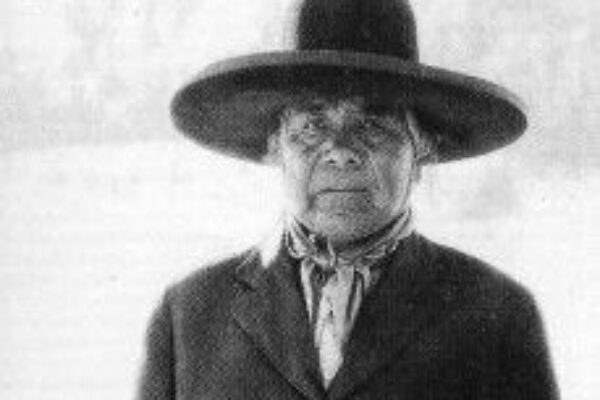In the early afternoon of April 8, 2024, The University of Texas at Austin will find itself in eerie darkness as the moon begins to block the light of the sun. In Austin, “totality” will begin at 1:36 p.m. and last less than two minutes. Just as students and staff are looking forward to the event, faculty members who study and teach about ancient cultures will be taking special note of the historic eclipse as their thoughts turn to our ancestors and what must have been going through their minds on such occasions. You may read about the Maya here and the Mesopotamians here.
***
Native Americans carefully observed all objects in the sky, whether sun, moon, planets or stars, says Jennifer Graber, professor of religious studies and associate director of Native American and Indigenous studies.
One of the reasons we have come to know more about that in the present is through the work of archaeoastronomers, says Graber, who has now been at the University 12 years. For example, the extraordinary city of Cahokia, built between 1100 and 1200 just across the Mississippi River from modern-day St. Louis in Illinois, was laid out with structures by which they could track celestial movements of different kinds. “There was an incredibly huge circle built with wooden poles that aligned to solstices. There is a lot of archaeological evidence for the way these communities were very careful observers of celestial phenomena.” Additionally, there is an oral tradition that includes many accounts of both regular movements of celestial bodies and unusual ones like eclipses.
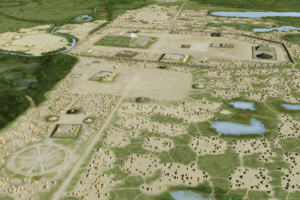
“Eclipses come into my research most directly because I study different Native visionary or prophetic movements,” says Graber. Two of the movements involving eclipses bookend the 19th century.
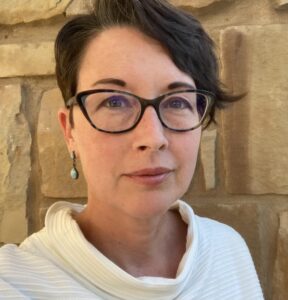
In 1805, President Thomas Jefferson and William Henry Harrison, then governor of Indiana Territory and later a short-lived U.S. president, were attempting to get the Shawnee to cede more land to the US in what was to become Ohio. The famous Shawnee chief, Tecumseh, and his younger brother, a visionary named Tenskwatawa, had formed a multi-tribe community in present western Ohio called Prophetville. Harrison, in trying to convince the Delaware Indians to reject an alliance with the brothers, urged the Delaware to challenge Tenskwatawa to perform a miracle, suggesting that he cause “the sun to stand still.” Tenskwatawa then predicted that an eclipse would occur on June 16, 1806. When it happened, Harrison looked like a fool, and Tenskwatawa’s authority grew.
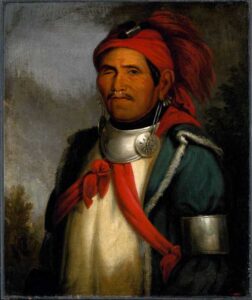
“Outsiders had all kinds of debates over whether he could have known this eclipse was happening,” says Graber, perhaps from a Farmer’s Almanac, “but his ability to pronounce that this eclipse would occur and that it does occur lends to his authority. This brings some people into his movement.”
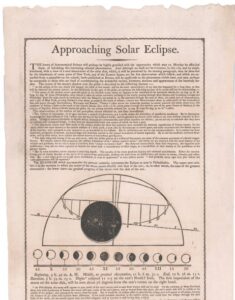
Of course, whatever influence the eclipse prediction brought him would not be enough to stem the relentless march of settlement supported by the federal government, and after a long, often violent struggle, which included the Battle of Tippecanoe, Tenskwatawa was part of Shawnee removal from his homeland and died in Kansas in 1836.
... in many ways they understand themselves to be in relationship to the sun. They have to live lives that respond to these cycles as well.
The second movement Graber has studied began New Year’s Day 1889. Wovoka was a Paiute Indian who had grown up in a white family with the name Jack Wilson in Nevada. On that day, during a solar eclipse, he fell into a trance or coma, and had a powerful vision. “It’s understood to be something quite special because it’s happening at the same time as an eclipse,” says Graber. He becomes the foundational leader of a movement that spreads across the whole continent called the Ghost Dance of 1890.
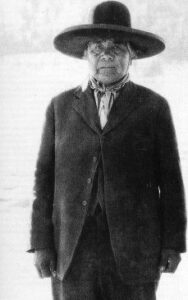
The movement predicted a transformation of the world, in which the ancestors would return (hence ghosts). “The game animals that have been scattered by settlement would return. Waterways would be restored because they had also been disrupted by settlement. Lost ways of life would be restored, and it would be restored by doing a particular dance.” If communities would do a particular dance during a five-day ceremony, and if they followed moral prescriptions, whites would disappear and old ways would return. Wovoka had absorbed a fair amount of Christian theology from the Wilsons during his youth, some of which showed up in the Ghost Dance Movement, such as non-violence, resurrection and the return of Jesus Christ. “Wovoka also claimed certain power to manipulate the weather and heal people,” Graber says.
The Ghost Dance Movement actually had started about 1870, also in the Nevada area, but received a huge boost with Wovoka’s vision some twenty years later. It gained power 1. because his vision occurred at the same time as an eclipse and 2. new technologies including the US Postal Service and the railroads made it easy to spread.
Tens of thousands of people joined the movement everywhere from the Canadian prairie to the Grand Canyon to Oklahoma, she says. “It reinforced his authority. It’s a way to demonstrate to people that he is a person with a certain kind of knowledge and authority. You can claim a vision, but you’ve got to get people to believe it,” Graber says. “Especially if your vision is asking for a new set of behaviors, you’ve got to persuade people that you’ve had an authentic experience. In both cases — Tenskwatawa and Wovoka — there were people within their communities and outside their communities that didn’t believe them. One being able to predict an eclipse and having a vision during an eclipse were ways of demonstrating authority.”
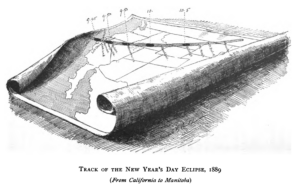
Whereas the earlier pan-Indian movement led by Tecumseh and his eclipse-predicting brother, Tenskwatawa, included armed resistance, the Ghost Dance did not. But when the movement spread to Lakota country, it caused Lakota to gather in South Dakota in substantial numbers, and the US Army, not understanding the dance or the prophecy, thought the ingathering was an overture to a battle. This led to the Massacre at Wounded Knee on December 29, 1890, which effectively ended the movement.
Black Elk became a Ghost Dancer, and at the end of the well-known book Black Elk Speaks, he hears the violence, puts on some of the garments associated with the Ghost Dance, and goes to Wounded Knee to respond.
“The thing that resonates with both movements is that because of the historical situation and the difficulty and the crisis of colonialism, there’s a receptivity to new religious ideas and movements,” including the Ghost Dance and the spread of peyote use, which was coincidental to the Ghost Dance movement, Graber says. “By 1890, there’s this incredible suppression of rituals, the slaughter of buffalo herds — people have a willingness to experiment with new options in this dire situation,” Graber adds.
“One thing I always try to tell my students is that Native peoples were very careful observers of the sky, and they had incredible depth of knowledge about it. There were some Native communities that we know by their architecture had understandings of lunar cycles over 20 years long. They were very sophisticated observers of patterns. I always feel it’s important to say that because, for instance, when Tenskwatawa predicted that eclipse, American observers thought, oh, he must have read about it in a Farmer’s Almanac, and now he’s tricking everyone because there’s no possible way these folks could know this.”
This presents an interesting wrinkle in Graber’s analysis — that Tenskwatawa might have known about the eclipse in advance not from a Farmer’s Almanac but from Native American knowledge, even as his followers believed it was prophecy.
“This was at the same time scholars were saying Native people could not possibly have built the mounds that were all over the eastern United States! They said these people could not have done it; there must have been a predecessor race whom they destroyed, because they really could not countenance the possibility of scientific knowledge. That’s an important part of the story: not only are they careful observers, but they also have stories and songs and rituals, which in many ways they understand themselves to be in relationship to the sun. They have to live lives that respond to these cycles as well.”
For the 2024 solar eclipse, Graber has friends traveling to Austin from different parts of the country. They plan to drive west into the Hill Country to maximize the time spent in the moon’s shadow. “I’m super excited.”
Graber’s prediction: “I think it’s going to be really fun.”
Wovoka’s ‘Messiah Letter’:
When you get home you must make a dance to continue five days. Dance four successive nights, and the last night keep us the dance until the morning of the fifth day, when all must bathe in the river and then disperse to their homes. You must all do in the same way.
I, Jack Wilson, love you all, and my heart is full of gladness for the gifts you have brought me. When you get home I shall give you a good cloud which will make you feel good. I give you a good spirit and give you all good paint. I want you to come again in three months, some from each tribe there [the Indian Territory].
There will be a good deal of snow this year and some rain. In the fall there will be such a rain as I have never given you before.
Grandfather [a universal title of reverence among Indians and here meaning the messiah] says, when your friends die you must not cry. You must not hurt anybody or do harm to anyone. You must not fight. Do right always. It will give you satisfaction in life…
Do not tell the white people about this. Jesus is now upon the earth. He appears like a cloud. The dead are still alive again. I do not know when they will be here; maybe this fall or in the spring. When the time comes there will be no more sickness and everyone will be young again.
Do not refuse to work for the whites and do not make any trouble with them until you leave them. When the earth shakes [at the coming of the new world] do not be afraid. It will not hurt you.
I want you to dance every six weeks. Make a feast at the dance and have food that everybody may eat. Then bathe in the water. That is all. You will receive good words again from me some time. Do not tell lies.

